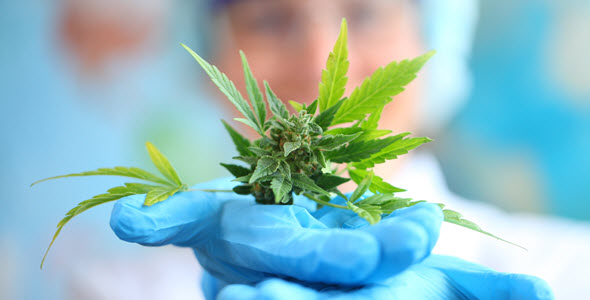By Maria McIntyre, Business Development Manager – Produce & Plant Agriculture at bioMérieux, Inc.
Interviewing: Kimberly Ross, PhD, Director of Quality Systems and Technical Director at Biotech Labs
With the growing interest surrounding the cannabis [testing] industry, can [you] explain the quality & safety evolution cannabis has gone through?
In the early days of analytical testing for cannabis, it was common for labs to omit quality control sample testing typically conducted alongside client sample testing in order to save costs associated with reagents and labor. The inclusion of quality control (QC) test samples adds a considerable volume of test samples in addition to client samples, in order to show defensibility and ‘trueness’ of the data. For example, a lab testing samples for cannabinoid potency should include a QC sample to verify the suitability of the instrument calibration with a known quantity of certified reference material (CRM), ideally independent of the primary CRM source used to calibrate (a different lot, or manufacturer, for example). When the result of the QC test sample is in agreement with the known quantity analyzed, a lab can be assured within a known window of uncertainty that all results produced concurrent with the QC are sound. When qualitative, ‘presence/absence’ testing is used in microbiology, it is common to include a daily positive and negative QC sample (or with every batch of client samples), in order to establish the ability to recover and detect the target microbe when it is spiked into matrix, as well as the ability to obtain a negative result in the absence of the control organisms. This best practice lends confidence in the results of microbiological testing delivered to the client.
AOAC’s Cannabis Analytical Science Program (CASP) working group has made great progress on this front with nine Standard Method Performance Requirements (SMPRs®) available from aoac.org at year’s-end of 2020. For microbial testing these include AOAC SMPR® 2019.001 for Detection of Aspergillus in Cannabis and Cannabis Products and 2020.002 for Detection of Salmonella species in Cannabis and Cannabis Products. Also underway is Draft SMPR for Detection of Shiga toxin-producing Escherichia coli in Cannabis and Cannabis Products. AOAC SMPRs are a vital first step in the standardization process for methods, describing the minimum recommended performance characteristics as well as suggested inclusivity/exclusivity organisms used during the evaluation of a microbiological method. In 2019 and 2020, AOAC opened several calls for method submissions for the detection of a variety of analytes in the cannabis matrix. AOAC expert review panels will use the minimum performance criteria established by the SMPRs to evaluate validation data of candidate methods submitted for consideration.
What evolution is essential for quality and safety testing of cannabis products?
State compliance-based testing for cannabis is dynamic and rapidly evolving. Expansion is occurring geographically, in terms of the number of new states implementing medical and adult-use markets. Newer states can look to data collected in states with more mature markets to help guide suitability of their own testing regulations. State-wide recalls that have occurred due to microbial contamination can be particularly informative. We are also seeing expansion within the scope of testing, to include a wider diversity of microbial concerns based on product type (flower, edible, topical, even suppositories). Similar to the risk-based approaches of the food safety or water quality industries, consumer safety needs to be calculated into the cost of doing business.
Some states have established a more formalized feedback loop between private labs doing analytical testing, according to state mandates, and the regulators who promulgate and are tasked with enforcing those mandates. It otherwise could be considered a main shortfall in state systems which fail to do so, according to laboratory representatives. As testing regulations continue to evolve at the state level, consideration should be given to bodies of emerging data in order to inform data-driven decisions.
Moving forward, how can companies similar to bioMérieux collaborate with the cannabis industry to not only ensure safety and quality solutions? What will be the immediate needs?
Life science companies play a vital role in education and collaboration with cannabis industry stakeholders. With longevity and experience in other consumer safety regulatory systems, expertise can be shared in order to avoid reinventing the wheel for cannabis safety, quality, and compliance testing. Awareness of new state programs and participation in advisory panels, work groups, or other opportunities where appropriate represent immediate and tangible needs. Furthermore, the manufacturing segments of the industry, from cultivation to processing, storage, and transport, need encouragement and support to be an active player in safety and quality. Internal quality control should be conducted during manufacturing to identify contamination or other quality issues far upstream of final product testing, at which point considerable resources have already been consumed in production—making the batch or lot failure extremely costly.
This communication is intended for a United States audience only.
Opinions expressed in this article are not necessarily those of bioMérieux, Inc.



